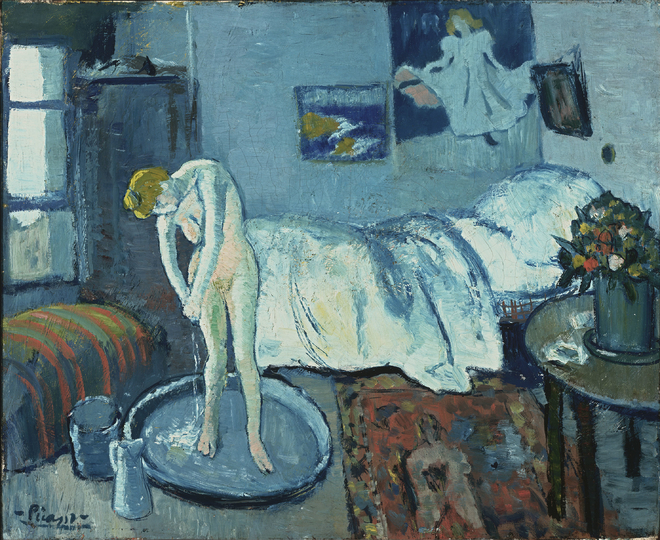Let Parisians strike, but me and my reader will always be able to find peace in the Museum D'Orsay. And not with just somebody, but with Picasso himself! For once, to my surprise, for the first time the exclusivity is given to his blue and pink periods.

This exhibition is a result of the first large-scale cooperation between Museum D'Orsay and the Musee National Picasso in Paris, where I invited you more than once. It gathered in itself masterpieces belonging the critical period of Spanish genius from 1900 to 1906.

In 1900 Pablo moved to Paris where he at first created the works of art still being under the influence of the avant-garde movement of Barcelona. For the next six years his style was affected by meetings with other artists and traveling across France, which clearly enriched color palette of Picasso.

These six years were vital for his art. He was still young when in 1901 his close friend Carlos Casagemas committed suicide. Picasso began to draw older people, beggars, blind people in cold and often bluish tones. And in 1904 he settled in Bateau-Lavoir and met his first wife, Fernande Olivier. Their romantic idyll changes his themes and color. He passes from death to life – melancholia, which we see in shades of pink.

Picasso was addicted to colors at the very beginning of his way, in Spain. He studied and mixed, transformed and united them during all the Parisian period, the high-profile period of creative blooming. Works of this cycle are "Nude on a red background", "The Blue Room", "The girl on the ball" and 300 more works became an exhibit in the Museum D'Orsay. It includes rare paintings, sculptures and engravings, archive materials, letters and photos.

The exhibition will last until 6 January 2019.











